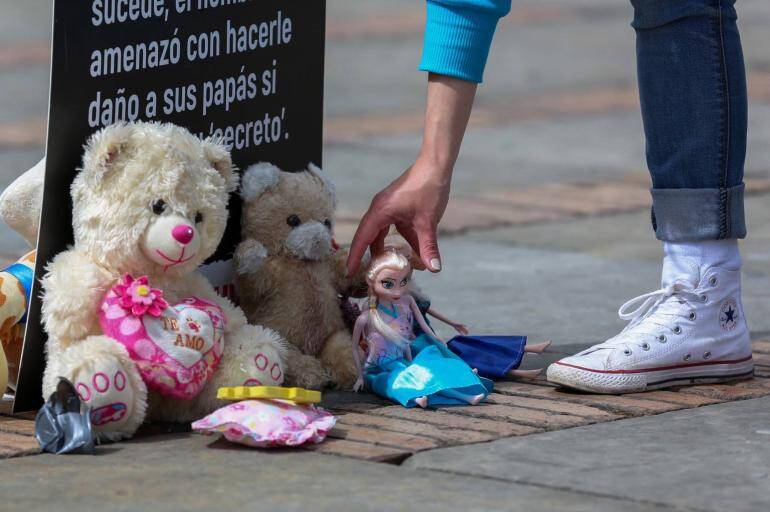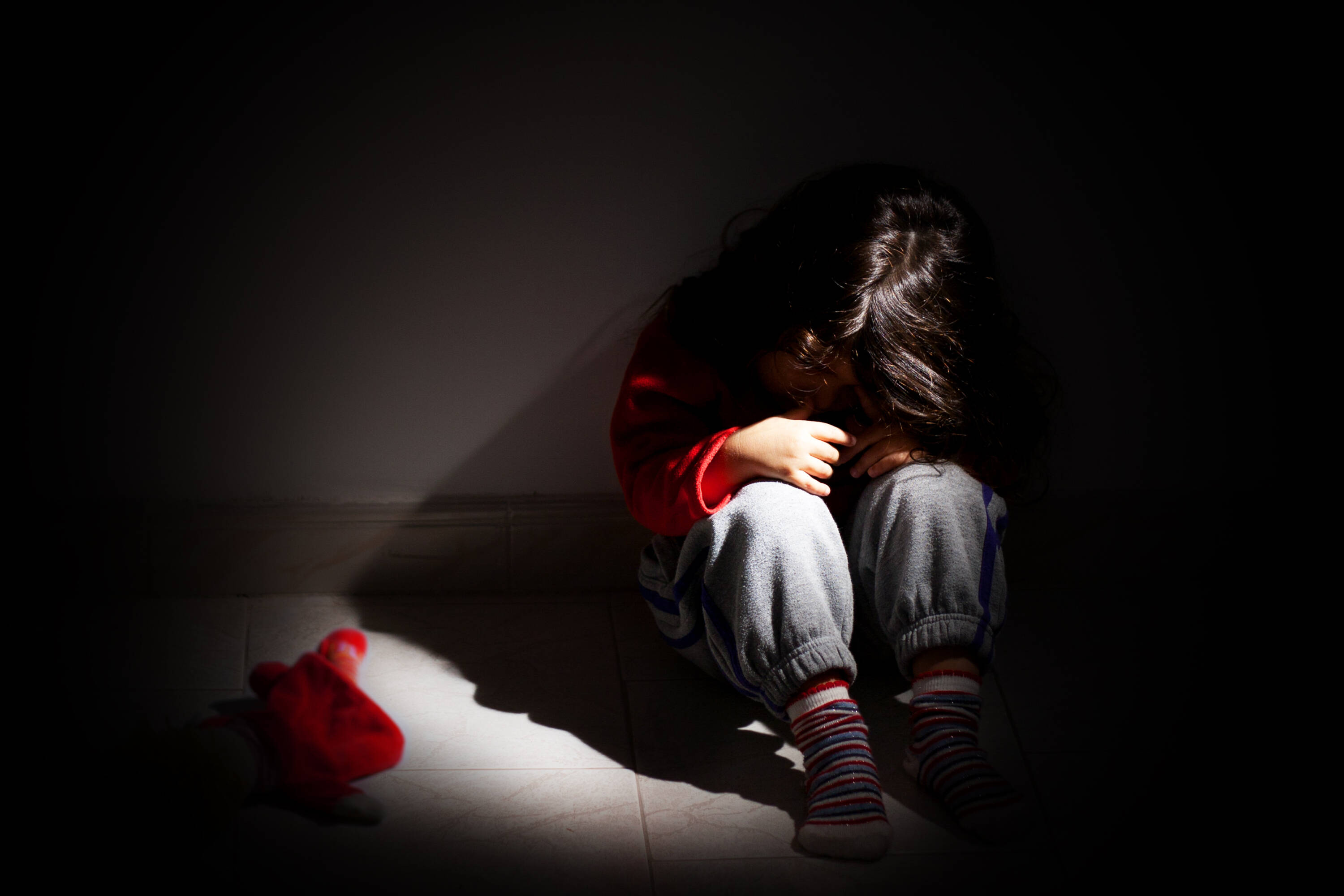For the fifth year, cases of child recruitment in the armed conflict in Colombia have increased.

In 2024, violence against children in armed conflict reached unprecedented levels worldwide , with a staggering 25 per cent increase in the number of grave violations (41,370 cases) compared to 2023. According to a report by the United Nations Secretary-General , children bore the brunt of hostilities and indiscriminate attacks, were affected by the disregard for ceasefires and peace agreements and the worsening humanitarian crises.
In Colombia, the situation is worrying. The United Nations verified that 646 serious violations occurred in 2024, affecting 513 children and adolescents in the country, representing a 42 percent increase compared to 2023. This is also the fifth consecutive year in which these cases, which encompass six categories of serious violations against children in contexts of armed conflict, have increased.
According to Julien Hayois, UNICEF child protection specialist, these categories include recruitment and use; killings and maiming; sexual violence; attacks on schools and hospitals; kidnappings; and denial of humanitarian access . Among these, recruitment is the most prevalent violation, which demonstrates how armed groups continue to recruit and use children and adolescents to increase their numbers and expand their control over territories, communities, and illegal economies.
Between 2019 and 2024, the United Nations has verified 1,206 cases of recruitment and use of children and adolescents . Of these, 450 occurred last year (a 64 percent increase compared to the 277 cases in 2023). “Children and adolescents are frequently used for surveillance purposes and forced to commit crimes such as extortion, contract killings, micro-trafficking, and other activities before being recruited ,” the report states.
According to Hayois, the increase in recruitment cases is not only an example of the military strategy of armed groups, but also reflects the violations of children's and adolescents' rights in many territories. "We see that those who are recruited and used often come from environments where there is poverty, discrimination, and limited state presence in terms of services, education, educational opportunities, and employment," he notes.
UNICEF also points out that recent years have seen an evolution in recruitment tactics. "In the last two or three years, we've seen the use of social media as a method widely used by armed groups, which may also explain this ability to recruit children and adolescents," explains Hayois.
Among the cases recorded last year, three of the affected children were recruited more than once in the same year, and 59 suffered more than one serious rape, 22 were murdered, 14 were mutilated, and 23 were victims of sexual violence. As Hayois explains, these figures, which refer to verified cases, do not reflect the full magnitude of the situation due to underreporting.
“ We know there is underreporting because there are many barriers to documenting cases and to families reporting due to fear and threats. Also, because sometimes there are no services to address complaints. Authorities and humanitarian organizations don't reach every corner of the country. That's why we know this is just the tip of the iceberg,” explains the UNICEF official.
To gain an understanding of this problem in the country, according to the Special Jurisdiction for Peace, the now-defunct FARC-EP systematically recruited at least 18,677 children between 1971 and 2016. These incidents occurred most frequently between 1996 and 2016.
Regarding the regions where the recruitment of girls, boys and adolescents in the country is concentrated in 2024, 76 percent of the cases verified by the United Nations occurred in Cauca (40%), Chocó (8%), Arauca (8%), Huila (7%), Putumayo (7%), Nariño (6%).

Photo: EL TIEMPO Archive
Four of the remaining five categories also showed increases. Cases of murder and mutilation increased by 16 percent, from 67 in 2023 to 78 in 2024. “ There was an increase in accidents involving explosive devices, deaths in combat, torture, and targeted killings of children and adolescents attempting to escape from armed groups or for being identified as members of another armed group,” the United Nations report states.
Thirty-three cases of sexual violence were also recorded last year, an 18 percent increase compared to 28 in 2023. “ All victims of sexual violence were girls and adolescent women, who suffered rape, sexual abuse, forced marriage, or forced early unions. It is estimated that many cases go unreported due to the stigma surrounding victims, the normalization of some forms of sexual violence, and limited safe reporting and response mechanisms,” the United Nations notes.
Attacks on schools and hospitals increased by 56 percent. Forty-two cases were recorded in 2024 compared to 27 in 2023. According to the United Nations, these attacks violated the rights to health and education of children and adolescents and put the safety of teachers at risk, while increasing their exposure to other risks such as recruitment or accidents involving explosive devices. Thus, 7,024 students were affected by these types of attacks in 2024.
They also note that there has been an increase in the use of schools as shields or trenches in combat, as places to spend the night, or to store weapons, among other things; and that, additionally, many educational institutions do not reopen for long periods or permanently after being affected.
Denial of humanitarian access, a category that refers to the restriction or impediment of access of personnel and humanitarian assistance to people in need in situations of armed conflict or disasters, affected 24 children and adolescents in 2024, an increase of 9 percent compared to 2023. In contrast, the only category that saw reductions was kidnapping, which with 16 cases last year, showed a drop of 52 percent .
Affected regions In total, 66 percent of grave violations against children in armed conflict occurred in departments on the Pacific coast (Cauca, Nariño, and Chocó) and bordering Venezuela (Arauca and Norte de Santander). In some departments, such as Bolívar, Caquetá, Córdoba, Guainía, Huila, Putumayo, Caquetá, and Vaupés, there was an increase of at least twofold. Furthermore, the United Nations report indicates that between 2022 and 2024, the number of municipalities affected by grave violations increased by 87 percent, from 70 to 140.
In these regions, the most affected populations continue to be indigenous and Afro-descendant communities, one of the main concerns expressed by the United Nations Secretary-General in the report. “Almost half of the children and adolescents who are victims of serious violations are from indigenous and Afro-descendant communities. This is also due to the fact that armed groups, high levels of poverty, and inequities often exist in the territories where these communities live,” Hayois notes.
For Ángela Constanza Jerez, national coordinator of the NiñezYA coalition, among the country's shortcomings in child protection is the fact that public policies are remaining on paper. " National institutions lack a consistent action plan with sufficient resources to implement these actions, and regional entities lack the technical and financial resources to address the challenges the country is facing due to the escalation of the armed conflict and the magnitude of what is happening. Although the Constitution establishes the primacy of children's rights, there is no political will to allocate the resources and technical personnel to make it a reality," she states.

Between 2019 and 2024, the UN has verified 1,206 cases of recruitment and use of minors. Photo: iStock
Additionally, Jerez points out that the current dynamics of violence, recruitment, and exploitation of children are insufficiently understood, and therefore, there are no tools to respond. "For example, minors are being recruited through social media, through the confinement of children, through unaccompanied migration, etc. We need to devise new ways to address these realities. What's being done isn't working."
The territorial entities lack the 'teeth' in terms of technical and financial resources to address the challenges the country is facing due to the escalation of the conflict.
This document from the international organization also makes recommendations to end and prevent serious violations against children. For example, it indicates that the Government must guarantee access to justice for victims of serious violations; adopt a strategy to prevent recruitment, use, exploitation, and sexual violence ; and strengthen reintegration services and protection strategies for victims' families and for those involved in the protection of children and adolescents.
They also refer to the need for the Government to implement the national action plan on the Safe Schools Declaration; for the Armed Forces to cease organizing civic-military activities involving children and adolescents; and for the expansion of demining coverage and education on the risks of mines and explosive devices, as well as victim assistance.
Additionally, they recommend that negotiating parties in peace talks consider child protection measures in their negotiations and agreements, including in ceasefire protocols , and that they recognize 18 as the minimum age for recruitment and use ; that all armed groups unconditionally release all children and adolescents and cease using mines and explosive devices; and that armed groups adopt action plans with the United Nations and allow safe, timely, and unhindered humanitarian access.
eltiempo




